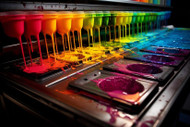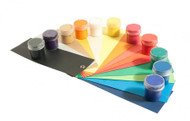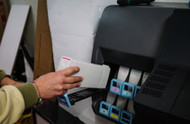1st Feb 2024
The Future of Printing: Emerging Technologies and Trends
Introduction
In a world where technology is constantly evolving, the printing industry is no exception. From 3D printing to eco-friendly solutions, printers are adapting to meet the needs of consumers and businesses alike. Let's delve into some of the emerging technologies and trends shaping the future of printing.
1. 3D Printing:
One of the most exciting developments in printing is 3D printing. This revolutionary technology allows for the creation of three-dimensional objects layer by layer, using materials such as plastic, metal, and even food ingredients. From prototyping to manufacturing, 3D printing is transforming various industries, including aerospace, healthcare, and automotive.
2. Eco-Friendly Solutions:
With increasing environmental concerns, eco-friendly printing solutions are gaining traction. Printers are now being designed to minimize carbon footprint by using recycled materials, energy-efficient processes, and sustainable ink cartridges. This shift towards sustainability not only reduces environmental impact but also aligns with the values of many consumers and businesses.
3. Digital Transformation:
The digital transformation of the printing industry is undeniable. Printers are becoming more connected and integrated with other smart devices and cloud services. This connectivity enables remote printing, collaboration, and workflow automation, streamlining processes and increasing efficiency.
4. Augmented Reality (AR) Printing:
Augmented Reality (AR) is poised to revolutionize the printing experience. By integrating AR technology with printed materials, such as magazines, advertisements, and packaging, printers can create interactive and immersive experiences for consumers. This fusion of print and digital opens up new possibilities for engagement and marketing.
5. Personalization and Customization:
Consumers are increasingly seeking personalized and customized printing solutions. Printers equipped with advanced software and hardware capabilities can now deliver tailored products, such as personalized photo books, customized apparel, and unique packaging designs. This trend towards personalization not only enhances customer satisfaction but also drives innovation in the printing industry.
6. Artificial Intelligence (AI) in Printing:
Artificial Intelligence (AI) is revolutionizing printing by optimizing workflow processes and enhancing print quality. AI algorithms analyze print data in real-time to detect and correct errors, leading to more accurate and efficient printing outcomes. Additionally, AI-powered printers can predict maintenance needs, reducing downtime and operational costs.
7. Mobile Printing:
The rise of mobile devices has led to an increased demand for mobile printing solutions. Printers with wireless connectivity enable users to print directly from their smartphones and tablets, providing convenience and flexibility. Whether in the office or on the go, mobile printing empowers users to print documents and photos effortlessly.
8. Blockchain in Printing:
Blockchain technology is making waves in the printing industry by enhancing security and traceability. By leveraging blockchain, printers can ensure the authenticity of documents and products, preventing counterfeiting and fraud. This transparent and immutable ledger also facilitates supply chain management and copyright protection.
"The future of printing lies at the intersection of technology and sustainability, where innovation meets environmental responsibility."
9. Nanotechnology:
Nanotechnology is revolutionizing printing by enabling the development of nano-scale materials and inks. These nano materials offer enhanced durability, resolution, and color accuracy, resulting in high-quality prints with impressive detail. From electronics to textiles, nanotechnology is pushing the boundaries of printing capabilities.
10. Continuous Ink Supply Systems (CISS):
Continuous Ink Supply Systems (CISS) are transforming the printing landscape by offering a cost-effective and sustainable alternative to traditional ink cartridges. CISS printers feature refillable ink tanks, reducing waste and operating costs over time. This eco-friendly solution appeals to budget-conscious consumers and environmentally conscious businesses.
Conclusion:
The future of printing is bright and innovative, driven by emerging technologies and evolving consumer needs. From 3D printing to AR, from eco-friendly solutions to AI integration, printers are continuously evolving to deliver high-quality prints while minimizing environmental impact. As we embrace these advancements, the possibilities for printing are limitless.












